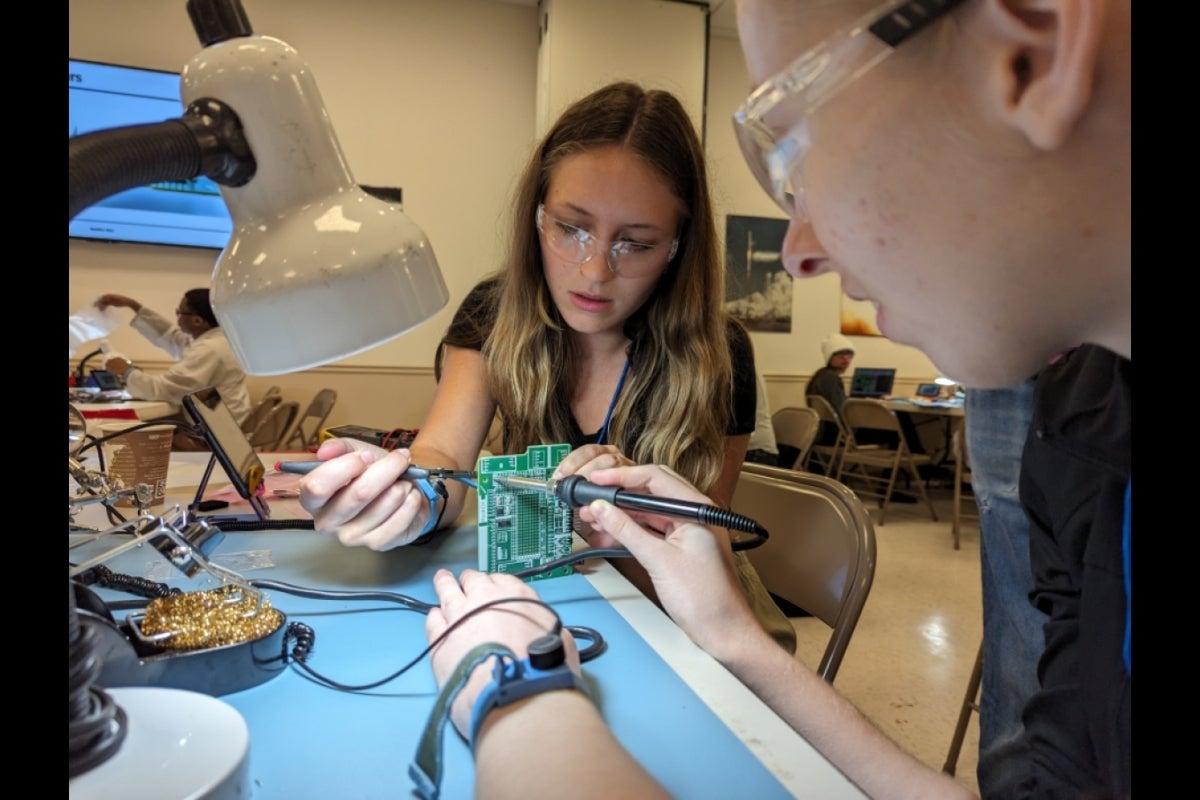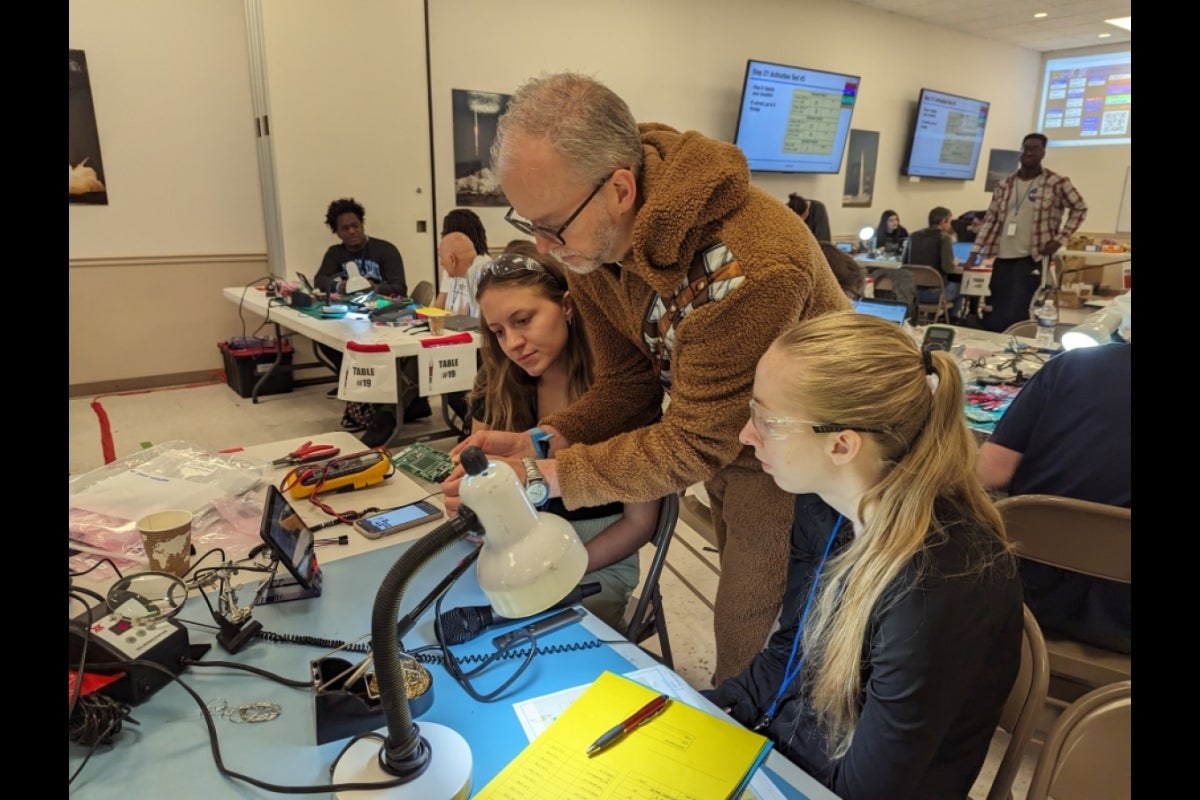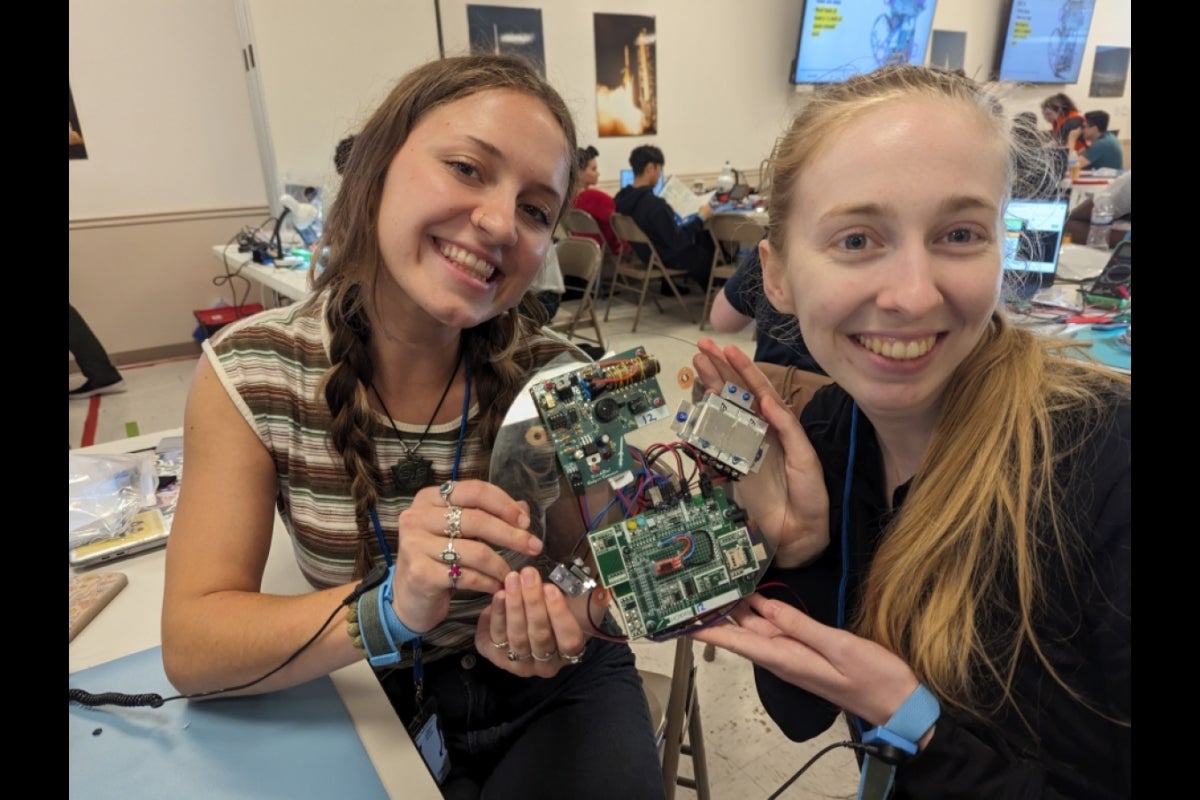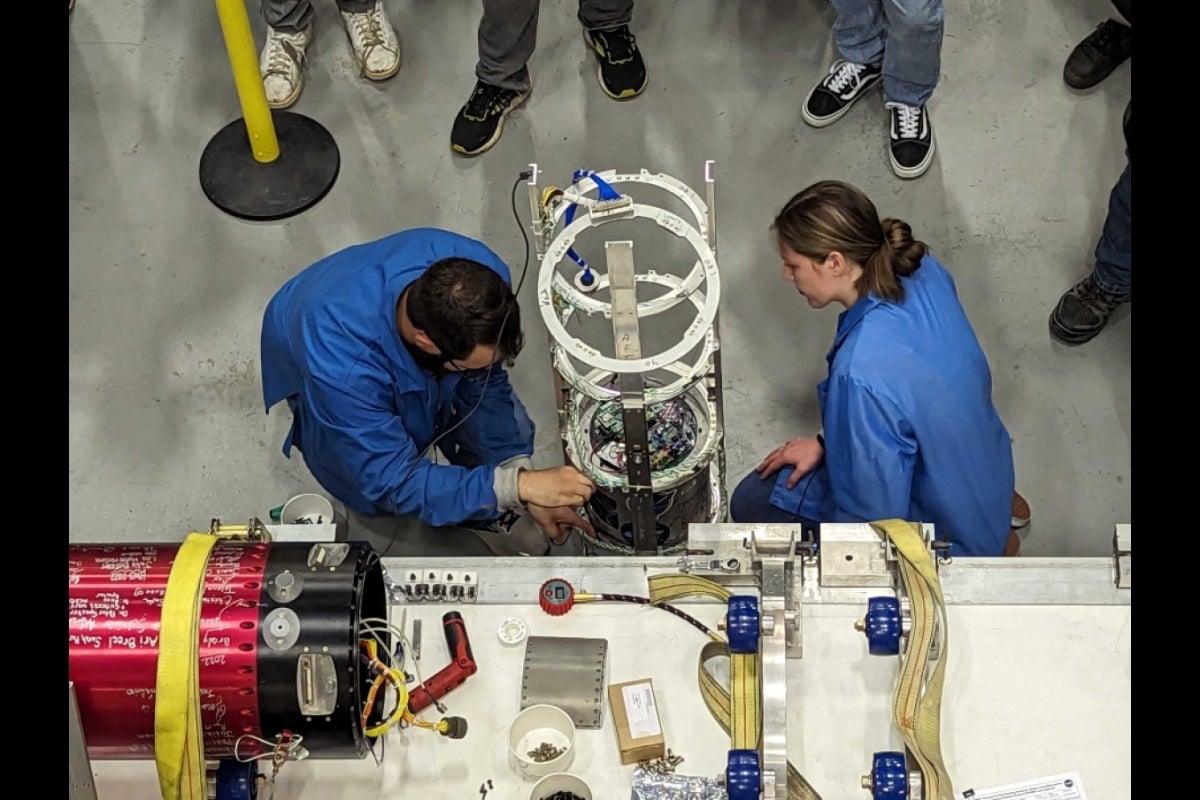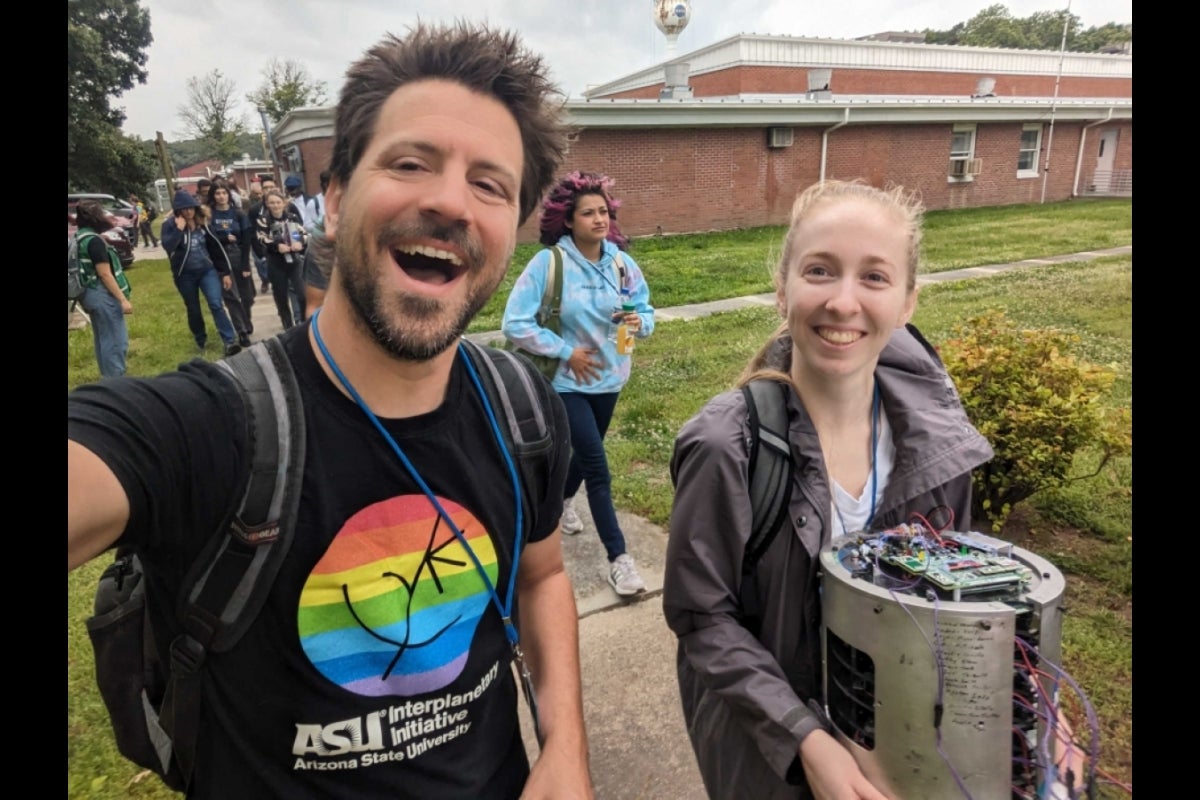ASU launches students into NASA's RockOn! program

ASU students Noelle Geddis (left) and Sadie Cullings. Photo courtesy Eric Stribling
Arizona State University is pioneering accessible pathways for students to engage in space exploration.
One such effort, guided by Eric Stribling, a faculty member in ASU's Interplanetary Initiative, gave two ASU students the opportunity to participate in a seven-day NASA-hosted RockOn! program held at NASA’s Wallops Flight Facility in Virginia.
Sadie Cullings and Noelle Geddis, who are both studying aerospace engineering, particpiated in the program, which empowers students who have the skills to design experiments for suborbital space flight.
Support for the students was funded by the Interplanetary Initiative, the School of Earth and Space Exploration, the Ira A. Fulton Schools of Engineering and Barrett, The Honors College.
As part of the workshop, Cullings and Geddis designed a Geiger counter, a vital tool for detecting and measuring ionizing radiation around Earth.
The Geiger counter, along with additional sensors, was successfully launched into suborbital space, in an effort to help understand the environment beyond our planet’s atmosphere.
Geddis and Cullings said that the experience expanded their horizon and solidified their passion for space industry opportunities.
“There was an incredible amount of work on the students’ part,” Stribling said. “It was a tremendous undertaking that provided unparalleled access to space and its opportunities.”
According to Stribling, the RockOn! program not only imparts technical skills but also nurtures an interdisciplinary and collaborative mindset, which is essential for the future of space exploration. The program also emphasizes the importance of embracing different perspectives.
“I think the best part of the program is that students with any knowledge level can participate and be proud of the experiment they learn to build,” Geddis said. “It is extremely inclusive and inviting to people of all backgrounds and disciplines.”
For Cullings, her RockOn! participation and the variety of space industry options cemented her post-graduate plans.
“This was such a great hands-on chance to develop new skills and to apply the skills you have learned in various ASU courses — applying those skills to a real-world project your team builds and launches into space,” Cullings said.
“This experience opened my mind to possibilities I hadn’t considered; it made me realize how many opportunities there are for anyone interested in space research and development.”
More Science and technology
Think you understand your dog? Don't be so sure
Life with a dog is a matter of give and take, especially when it comes to communication. With no common human-dog language, our…

Transporting food from farm to table, efficiently
Arizona is the nation’s winter lettuce capital, producing approximately 90% of country’s supply from November to April, according…

ASU ranks No. 9 worldwide for US patents in 2024
Arizona State University remained in the top 10 universities worldwide for U.S. utility patents issued for the fourth time, and…
